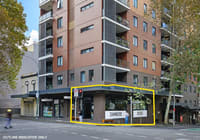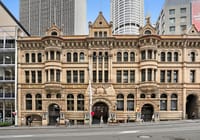
The in-demand industrial spaces investors are seeking and why
After a record-smashing two years of industrial property prices, demand from investors is still at its strongest for A-grade stock that’s either new or near-new.
“And that’s particularly for those properties that have long leases in place and are in the $5 million-plus bracket,” said Greg Tate, associate director of Raine & Horne Commercial Brisbane Southside & Bayside. “People are lining up for those, often from Brisbane, Sydney or Melbourne.
“Investors are interested in new industrial stock because they’re low maintenance but will still attract plenty of depreciation value over the term, and they will last a long time.”
“In mid-2021, I was involved in two sales of those, and they had more than 160 enquiries.”
There’s also demand for B or C-grade older industrial tin sheds and factories, and as a result they’re often selling prior to their auction or expressions-of-interest date, Mr Tate reports. Prices are still high too, with yields dropping from 6.5 or seven per cent 12 months ago in Brisbane and South East Queensland, into the five or four per cents now.
“Assets that have the potential to be repositioned through a refurbishment or changing tenancies, especially on land-rich sites, are also highly sought-after,” he said.
Ben Cooper, managing director of commercial real estate company Cameron, agrees that land is king. In Melbourne, he’s found the same trend.
“There’s now a real focus on land and we’ve got supply shortages along the south-east corridor, so we’re seeing record prices every day, with some close to doubling in 18 months,” he said. “As a result, demand is pushing out to the next ring.
“We’re now seeing yields compressed to sub-4 per cent, but there’s still a lot of money wanting to move from office and retail to industrial, both from larger funds and smaller investors. A lot of those funds are coming from offshore too.”
There’s also a lot of interest in logistics properties closer to the CBDs, says Gavin Bishop, managing director of industrial and head of industrial capital markets Australia at Colliers. He’s found a lot of investment activity close to high-density areas with good access to infrastructure.
“Many groups want to invest heavily in sites 15 to 20 kilometres from the Sydney and Melbourne CBDs because there’s significant rent growth occurring due to lack of supply and the growth in e-commerce.”
“A lot of tenants want to be there to reduce their transport costs and be closer to distribute to greater areas of Sydney and Melbourne.
“It’s all warehousing, last-mile logistics and e-commerce. It’s about speed to the customer. Now, with the price of land and increased warehousing demand, multilevel warehouses are a real focus. A few years ago, they were just in South Sydney and Port Melbourne, but now they’re front of mind for industrial investors.”
Mr Bishop has also found significant interest coming from offshore – from US companies such as Blackstone, KKR and BlackRock, from Canada via firms such as Oxford Properties, CCP Investments and Cadillac Fairview and throughout Asia, particularly Singapore, Malaysia and Japan, and from the UAE.
“They see Australia as a stable economy and still slightly behind what’s happening in the US and Asia in terms of the growth of infill markets,” he said. “So, there’s now also a lot of reweighting from office into logistics. But investors overseas consider us a country that dealt well with COVID too.”
Market outlook
We asked other industrial sector experts what trends they are seeing:
“Increased capital flows, combined with a lack of immediate supply and strong market sentiment has driven pricing increases within the industrial land market threefold. Given the large occupier demand in this market segment, we believe this trend will continue into the medium term,” Danielle Tadi, JLL.
“The Brisbane industrial market is experiencing unprecedented levels of leasing demand, which should see rental growth in certain sectors through 2022, balancing any changes in interest rates,” Michael Callow, CG Property.
“With WA’s economy being a stand-out globally, the local industrial market has benefitted from significant and diverse occupier demand, supporting unmatched levels of liquidity across the investment landscape,” Nick Goodridge, JLL.
“The Industrial space has seen many shifts with the rise of automation, the requirement for inner ring logistics hubs for faster distribution and a move away from more traditional retail locations. Low-interest rates have also created a surge in owner-occupier demand,” Peter Vines, Ray White Commercial.
“The industrial property market is set to enjoy a sustained period of significant rental growth. This is underpinned by record levels of tenant demand, largely attributable to the booming e-commerce sector, which is set to double in the coming years,” James Jorgensen, CBRE.










